Today, let’s make Giant Korean Tonkatsu, Wang Donkatsu 왕돈까스! I’ll reveal the secret tonkatsu recipe that only donkatsu restaurants know! Plus, the key to this dish is a sweet and creamy Korean-style donkatsu sauce – something you won’t find in stores. Today, I’m going to share the ultimate secret recipe with you! You’ll be amazed by the crispy outside and juicy inside of this donkatsu!
Table of Contents
What is Wang Donkatsu? 왕돈까스
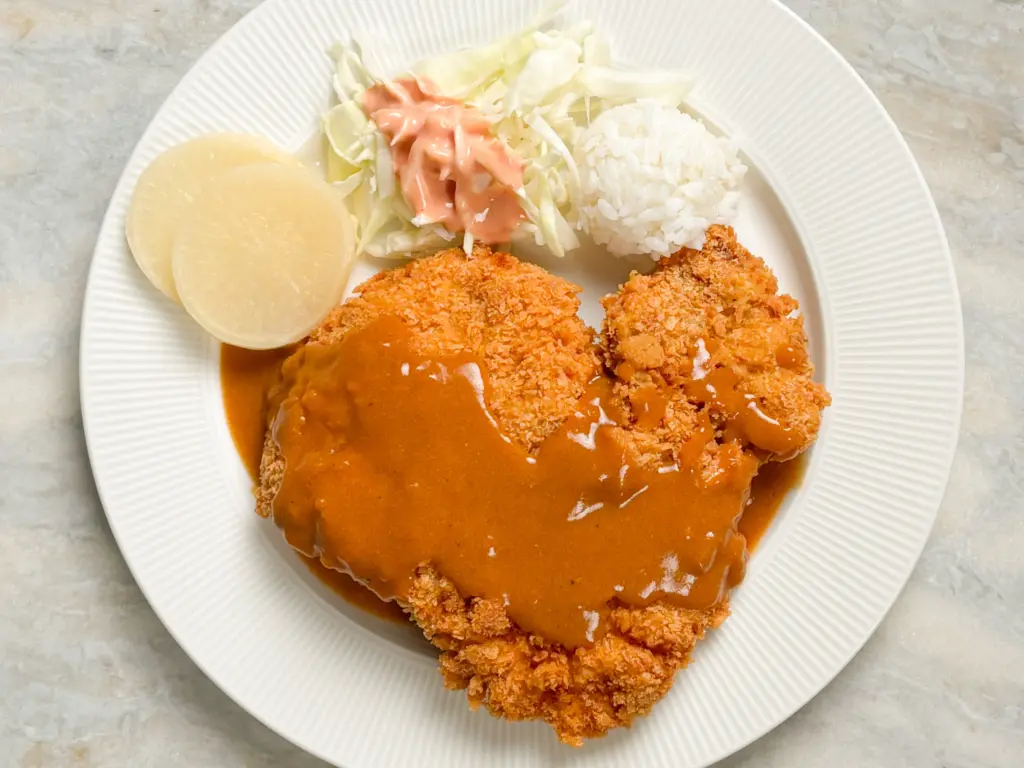
‘Wang’ in Korean means ‘king’ and refers to an extra large donkatsu. It can be as big as a face or even bigger than two hands put together.
At Onjeong Donkatsu restaurant in Seoul, there is a famous challenge where if you finish their massive ‘Daewang Donkatsu’ (Giant King Donkatsu) in 20 minutes, you get the 30,000 KRW meal for free. This place is famous because many mukbang YouTubers have attempted the challenge. If you’re a big eater, why not give it a try? haha
What is Korean Tonkatsu?
Korean tonkatsu (donkatsu) is a Korean-style adaptation of Japanese tonkatsu. In Korea, it is phonetically written as “Dongasseu” (돈까스). The most iconic style is a large, wide cut pork cutlet that is deep fried and generously covered with a Korean-style demi-glace sauce. It is typically served with shredded cabbage salad, danmuji (pickled radish), rice, and a bowl of creamy soup.
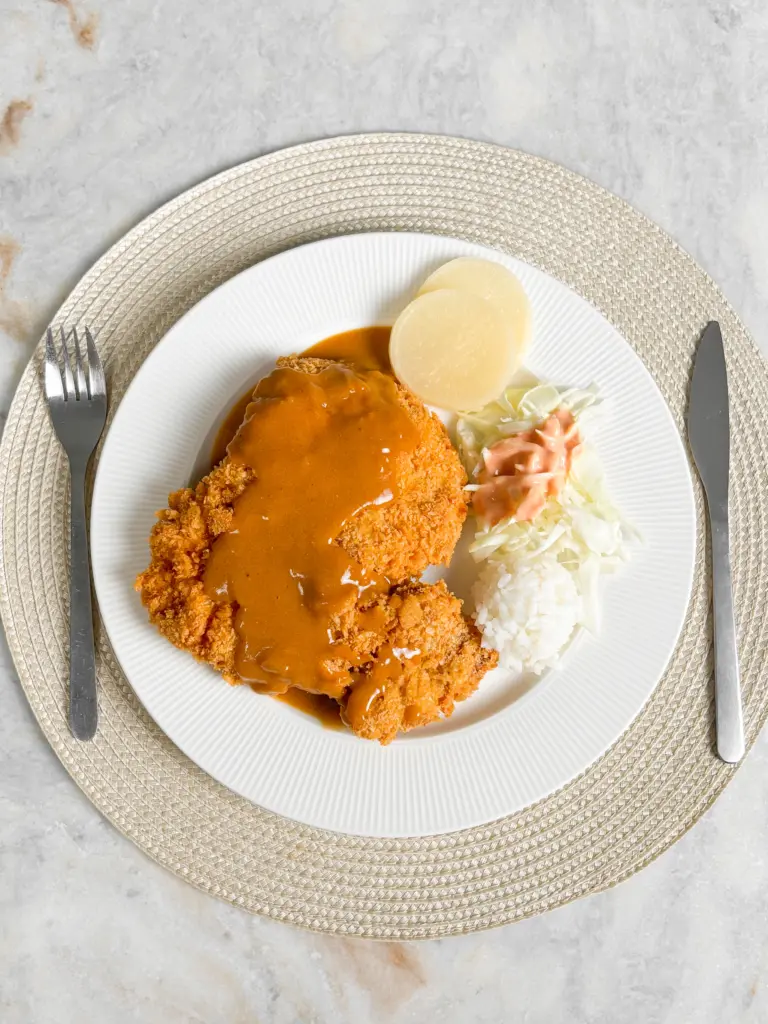
Today, Japanese-style tonkatsu has become more common in Korea, leading to the decline of traditional Korean-style tonkatsu restaurants. This old-school version is known as “Gyeongyangsik Donkatsu” (경양식 돈까스), referring to the classic Korean-style Western food that was popular in the past.
It is believed that tonkatsu was first introduced to Korea in the 1930s under Japanese rule. While both Korean and Japanese versions involve deep-frying breaded pork, the sauce, side dishes, and eating style have been uniquely adapted in Korea. Let’s take a closer look at the differences between Korean and Japanese tonkatsu!
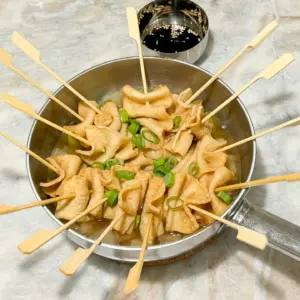
Another Koreanized Japanese dish is eomuk tang (fish cake soup). It’s a warm, comforting soup that will make you crave a glass of soju.
The difference between Japanese and Korean Tonkatsu
Let’s compare Korean Donkatsu and Japanese Tonkatsu based on their shape, pork cuts, sauce, side dishes, soup, and rice.
Shape
Korean-style donkatsu is made by pounding the pork flat, making it thin and wide, often large enough to cover the entire plate. This is why it is sometimes called “wang donkatsu” (king size donkatsu).
Japanese-style tonkatsu is thicker and has a smaller, fist-sized shape.
Pork Cuts
Korean tonkatsu is thick and usually made with pork loin (등심, deungshim).
Japanese tonkatsu comes in two varieties: Hirekatsu (ヒレカツ) made with pork tender loin and Rosukatsu (ロースカツ) made with pork loin.
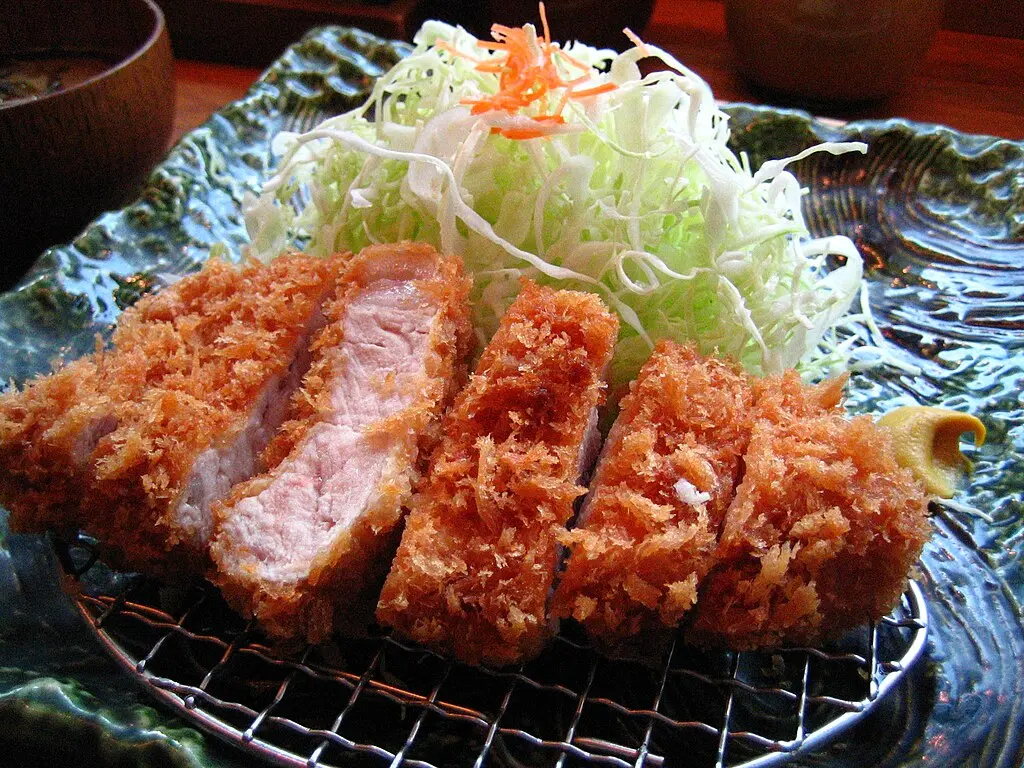
Sauce
Korean tonkatsu sauce is based on demi-glace and is often sweeter and creamier.
Japanese tonkatsu sauce is based on Worcestershire, which makes it saltier and thicker than the Korean version.
For this reason, Korean tonkatsu is served with the sauce already poured on top, while Japanese tonkatsu is served with the sauce on the side for dipping. Nowadays, many young Koreans prefer to dip the sauce as in Japan.
Side Dishes
Korean donkatsu always comes with a cabbage salad topped with Thousand Island dressing or a simpler version with kechup mayo. Other common sides include danmuji (pickled radish), kkakdugi (radish kimchi), corn salad, and macaroni salad. A fun fact about Korean donkatsu is that many restaurants used to serve kkakdugi kimchi with it, although this has become less common.
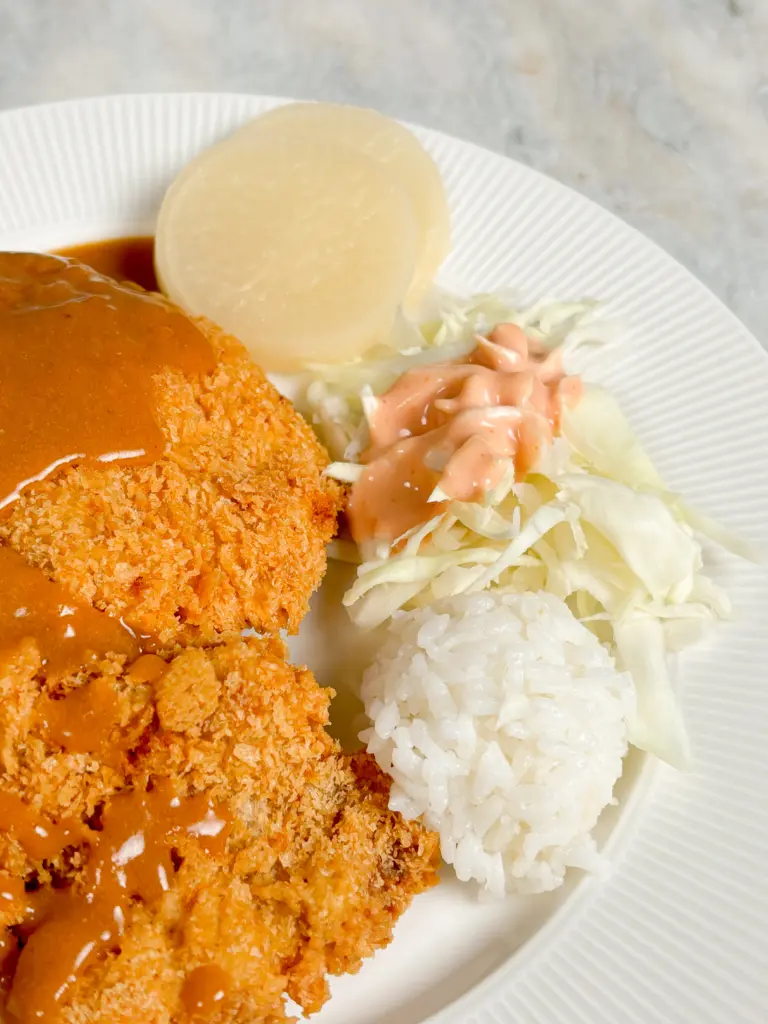
Japanese tonkatsu also comes with cabbage salad, but it is usually served with a sweet and tangy soy sauce-based dressing.
Soup
Korean tonkatsu is served with cream soup.
Japanese tonkatsu is usually served with miso soup (miso shiru).
How It’s Eaten
Korean donkatsu is served as a whole cutlet, so it must be carved like a steak. A fork and knife are provided for this purpose.
Japanese tonkatsu is already cut into pieces, so chopsticks are used to eat it.
Rice
Korean donkatsu is served with rice on the same plate as the donkatsu.
With Japanese tonkatsu, the rice is served separately in a bowl.
Types of Korean Donkatsu
In Korea, there are various types of tonkatsu based on toppings and sauces.
- Gyeongyangsik Wang Donkatsu
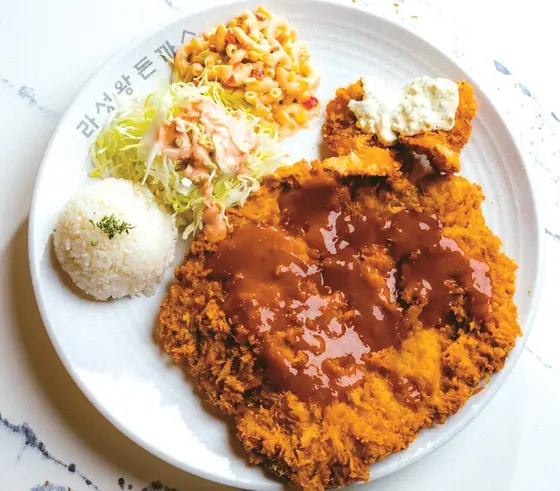
This is the most basic type of Korean donkatsu. A large, plate-filling cutlet is topped with demi-glace sauce and served with danmuji (pickled radish), cabbage, rice, and soup.
- Cheese Donkatsu
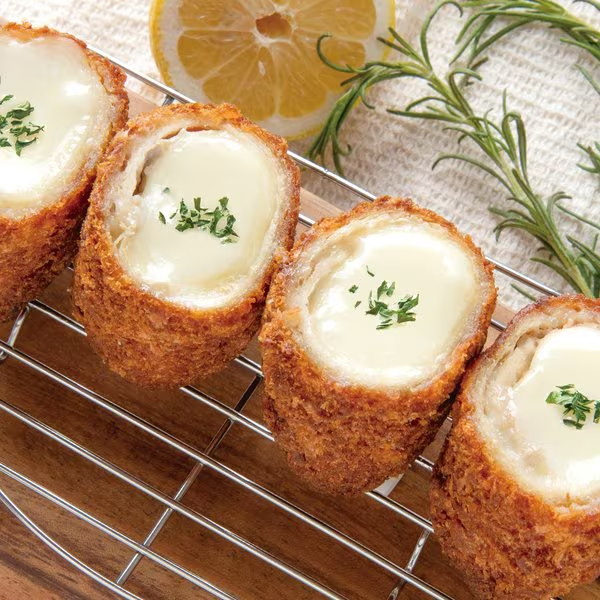
One of the most popular types of donkatsu in Korea is cheese donkatsu. Chewy mozzarella cheese is stuffed into the crispy cutlet and fried together. When you take a bite, the cheese expands and delivers a rich, savory flavor that’s irresistible.
- Sweet Potato Donkatsu
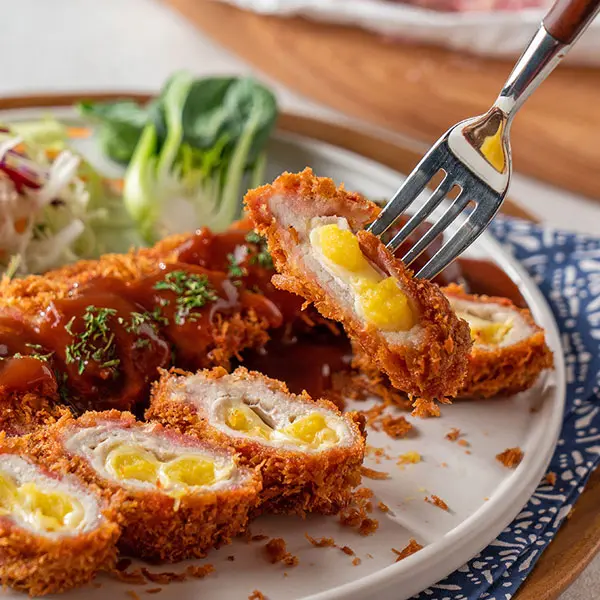
In this style, soft and sweet sweet potato mousse is either stuffed into the cutlet or generously topped. It’s typically served as sweet potato cheese donkatsu, where cheese and sweet potato are combined as a topping or stuffed inside. The combination of the sweetness of the sweet potato and the saltiness of the cheese creates the perfect “sweet and salty” balance that suits the Korean palate.
- Spicy Donkatsu
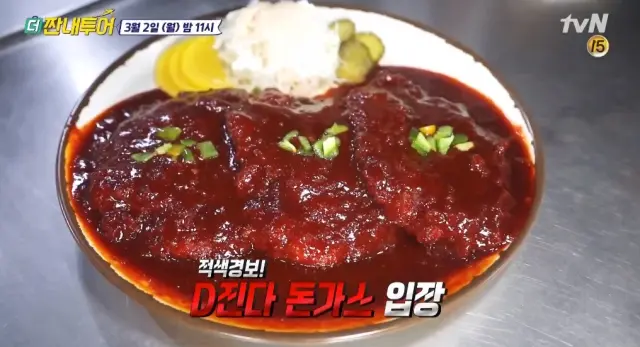
For those who love spicy food, spicy donkatsu is a must in Korea. The most famous is Onjeong Donkatsu’s “Dijin Tonkatsu,” which contains capsaicin in the sauce. It’s said to make your tongue tingle and even cause stomach pain the next day. This tonkatsu is also part of a challenge where if you finish it in 20 minutes, it’s free. Are you up for the challenge?
Bumeok? Jjikmeok? 부먹? 찍먹?
In Korea, there is always a hot topic when it comes to food: Bumeok? Jjikmeok? This refers to whether you pour the sauce on top of the food or dip the food into the sauce. In Korean wang donkatsu, the sauce is poured on top, while in Japanese tonkatsu, the sauce is served on the side for dipping.
Nowadays, many Koreans enjoy the crispy texture of tonkatsu and prefer to dip the cutlet in the sauce so they can enjoy the crunchiness all the way through. On the other hand, some people prefer to pour the sauce on and let it soak into the batter, mixing with the meat for a different texture.
This is an eternal debate in Korea. Which side are you on? Bumeok (pouring the sauce) or Jjikmeok (dipping in the sauce)?
Tonkatsu Batter
When frying tonkatsu, you may use the basic method of coating the meat in flour, egg, and breadcrumbs. This is the simple and easy method, so it’s often used at home. However, tonkatsu restaurants often use a batter instead.
The advantage of using a batter is that you can skip the step of rolling in flour and egg. Instead, the cutlet is dipped in the batter and then coated directly in breadcrumbs before frying. The main reason for using a batter is to prevent the breading from separating from the meat. If you dredge the cutlet in flour, egg, and breadcrumbs separately, the breading may separate from the meat during frying or when you cut the tonkatsu later. With a batter, the breading sticks firmly to the meat, and since the batter is already seasoned, you end up with a more professional and flavorful tonkatsu.
How to Fry Tonkatsu?
The frying temperature can range from 160°C to 180°C, but many tonkatsu restaurants typically fry at around 170°C. Fry the tonkatsu until the breading is golden brown, which usually takes about 6-7 minutes. Unlike Korean fried chicken, which is double-fried for extra crispness, tonkatsu is only fried once.
Should I Make Panko (Breadcrumbs)?
You should use panko, not western style breadcrumbs. Panko can be made at home by grinding bread. Homemade panko allows you to control the size of the crumbs, creating a crunchier texture and preserving the flavor of the bread. It also gives a crisper and airier taste when fried. However, you must use frozen or dried bread, and you must crisp it up in the oven or on a pan before grinding it.
Tonkatsu is a dish you usually make when you want something quick and easy, but don’t you sometimes get lazy about cooking? If that’s the case, you can just buy panko at the store. The difference is in texture and flavor, but it’s still delicious when fried.
Demi-Glace Tonkatsu Sauce
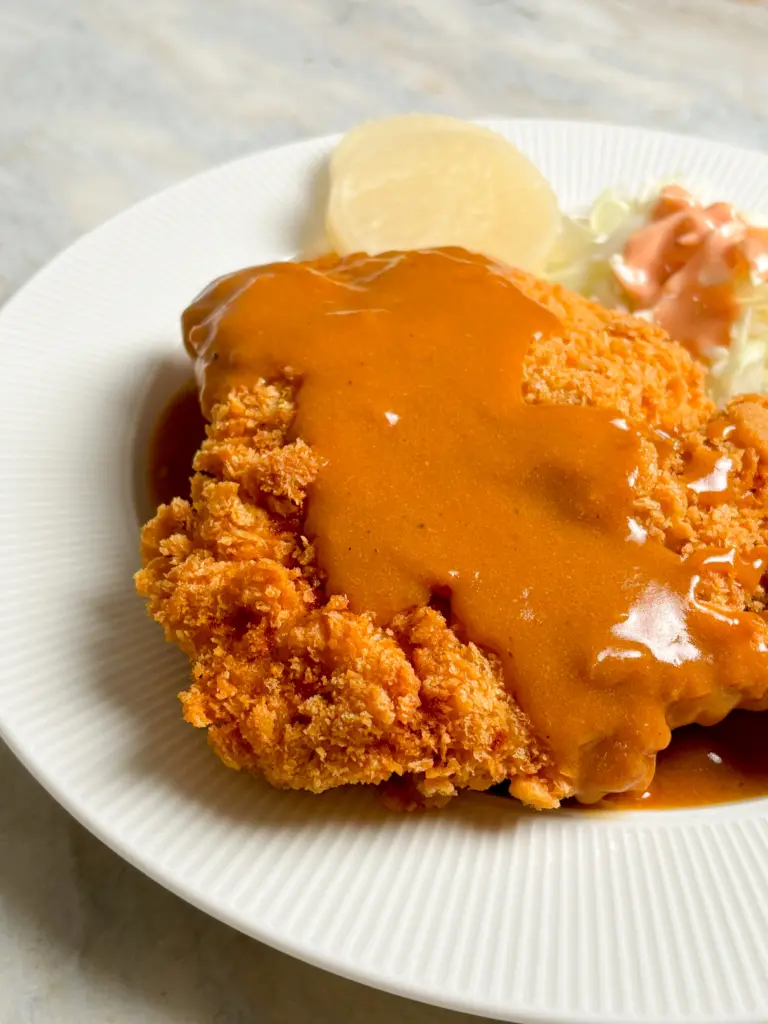
Today I’m going to share a recipe for a sweet and creamy Korean-style tonkatsu sauce made with a demi-glace base, which is commonly used in Korean tonkatsu restaurants. This creamy Korean-style tonkatsu sauce is hard to find in stores, but it’s so delicious that it’s worth making at home. However, if making the sauce is too much of a hassle, you can always buy it in a store. The store-bought tonkatsu sauce isn’t creamy, but it’s a sweet and spicy sauce that I like. Since this is Korean tonkatsu, I would recommend a tonkatsu sauce product that goes well with the Korean style.
Recommended Korean Tonkatsu Sauces
- Chung Jung One O’Food Classic Katsu Sauce
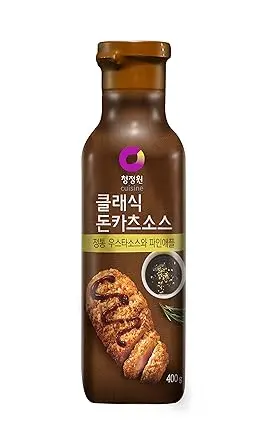
Shop in the US: https://amzn.to/42Oljf7
- Ottogi Tonkatsu Sauce

Shop in the US: https://amzn.to/3Qec7sL
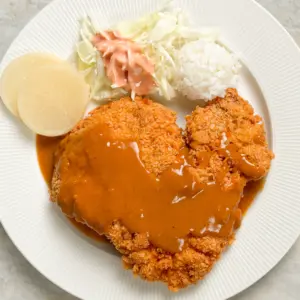
Giant Korean Tonkatsu (Wang Donkatsu)
Equipment
- 1 Fork
- 1 Meat mallet
- 1 Knife & cutting board
- 1 Pot
- 1 Pan
- 1 ladle
- 1 Spatula
- 1 Tongs
Ingredients
- 2 pieces pork loin cuts (cutlet meat)
- 2 pinch salt
- 2 pinch pepper
- 1/4 cabbage
- 4 pieces danmuji (pickled radish)
- 2 tbsp rice
- 1/2 bag panko
- 1.5 L oil
Batter
- 2 eggs
- 100 g flour
- 70 g water
- 1 tsp salt
Korean Tonkatsu Sauce
- 20 g butter
- 2 tbsp flour
- 5 tbsp ketchup
- 2 tbsp sugar
- 3 tbsp Worcestershire sauce
- 1 tbsp soy sauce
- 60 ml milk (Restaurants secret)
- 180 ml water
- 1 pinch MSG (Restaurants secret)
Keyonnaise (ketchup & Mayo Sauce)
- 2 tbsp ketchup
- 3 tbsp mayonnaise
Instructions
Tenderize the Pork
- Pierce the pork with a fork
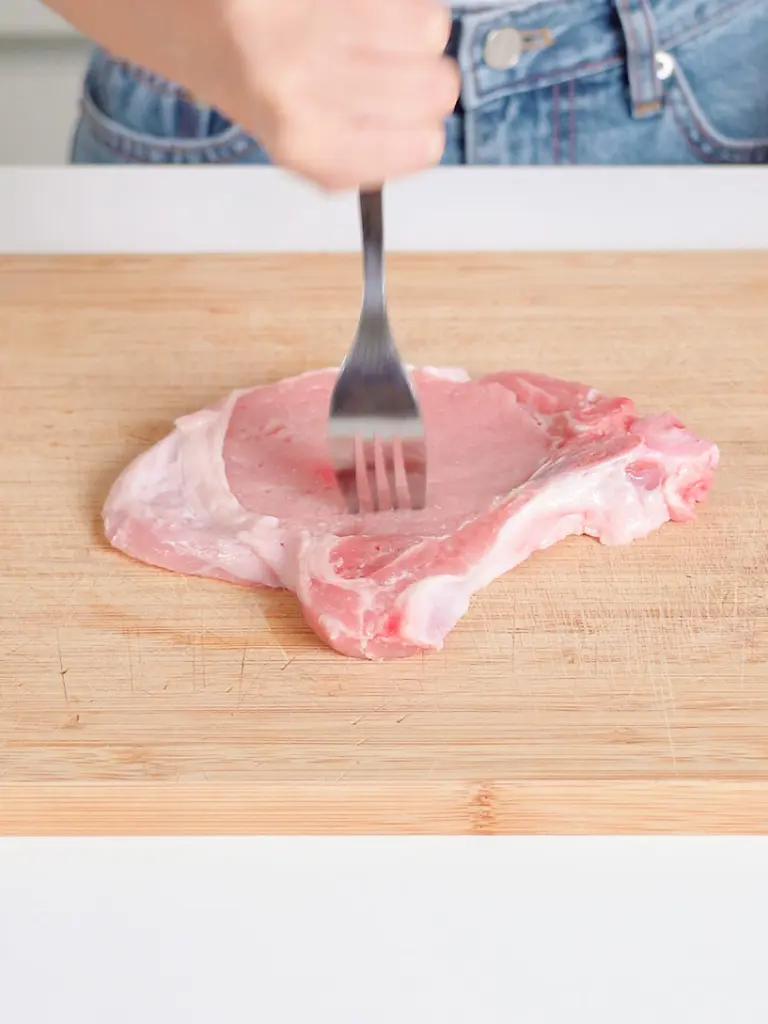
- and pound with a meat mallet.
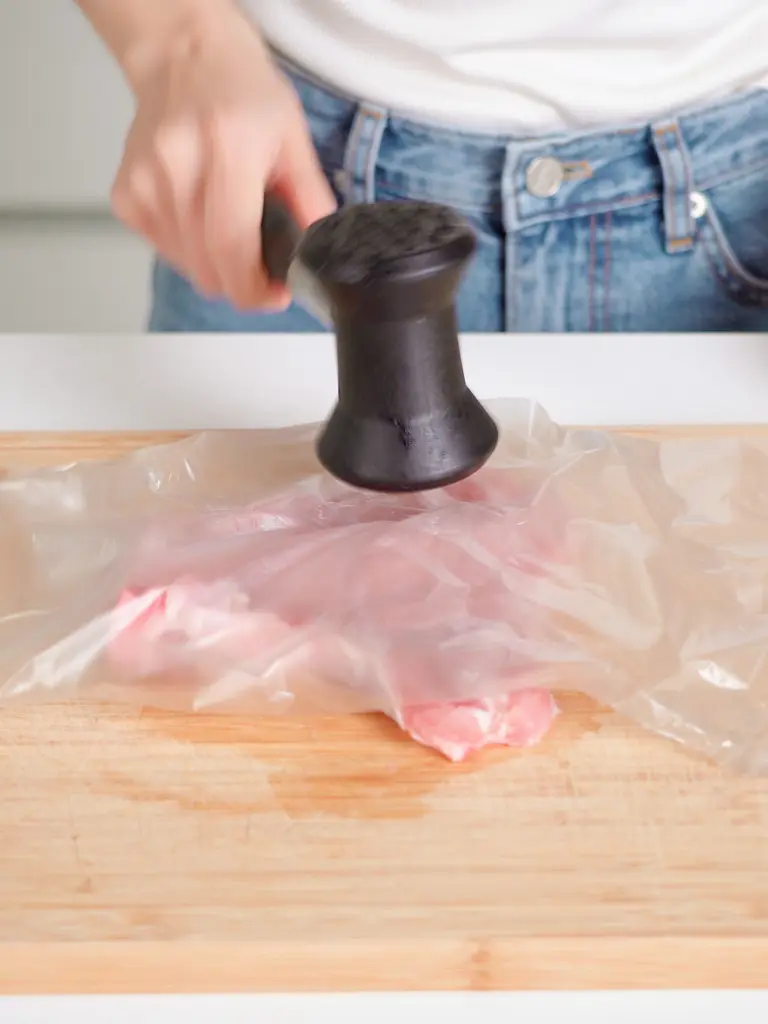
- Season both sides with a pinch of salt and pepper.
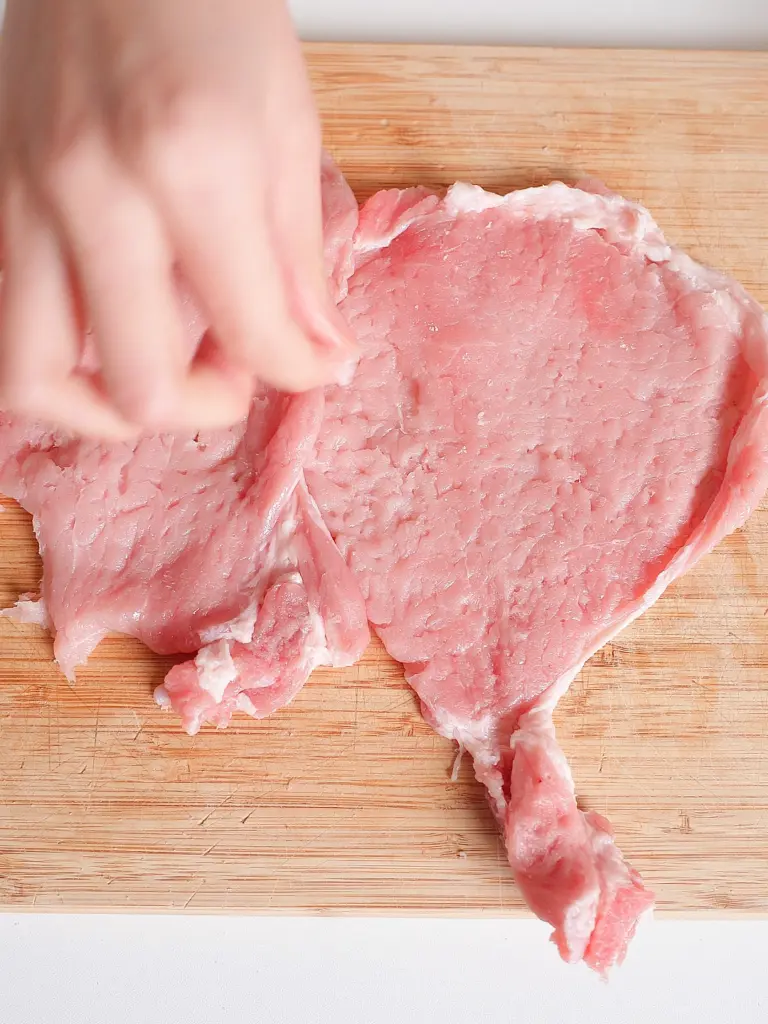
Make the Batter
- Mix the batter ingredients2 eggs100g flour70g water1 tsp salt
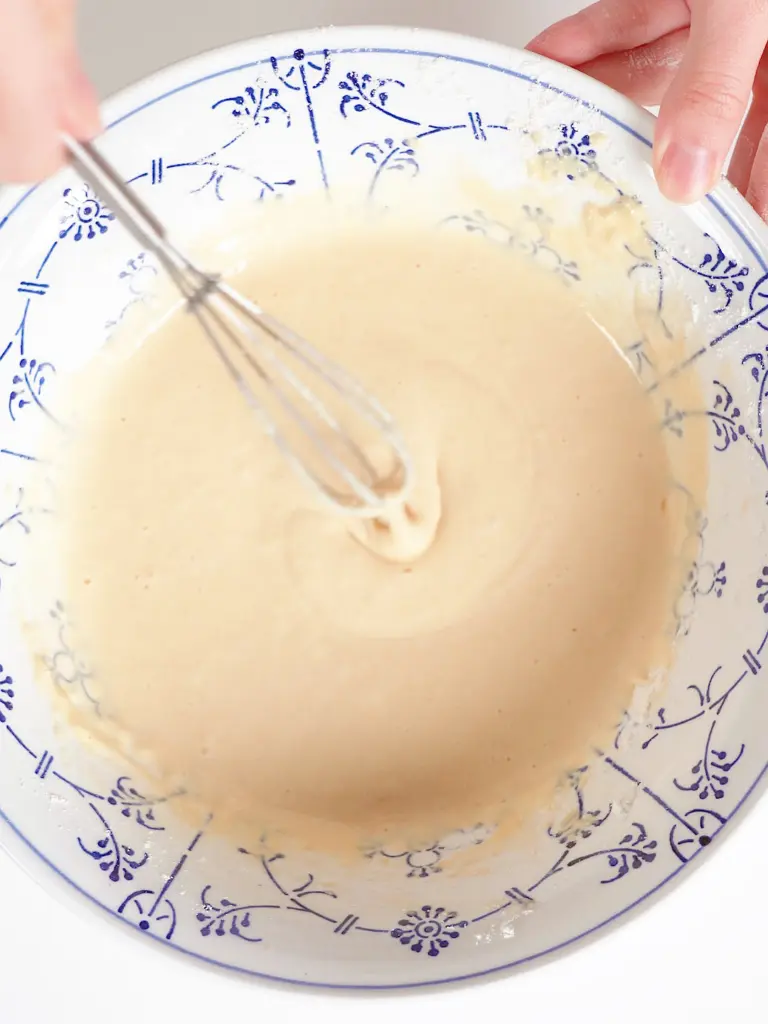
- Coat the pork with the batter and refrigerate for 15-20 minutes.
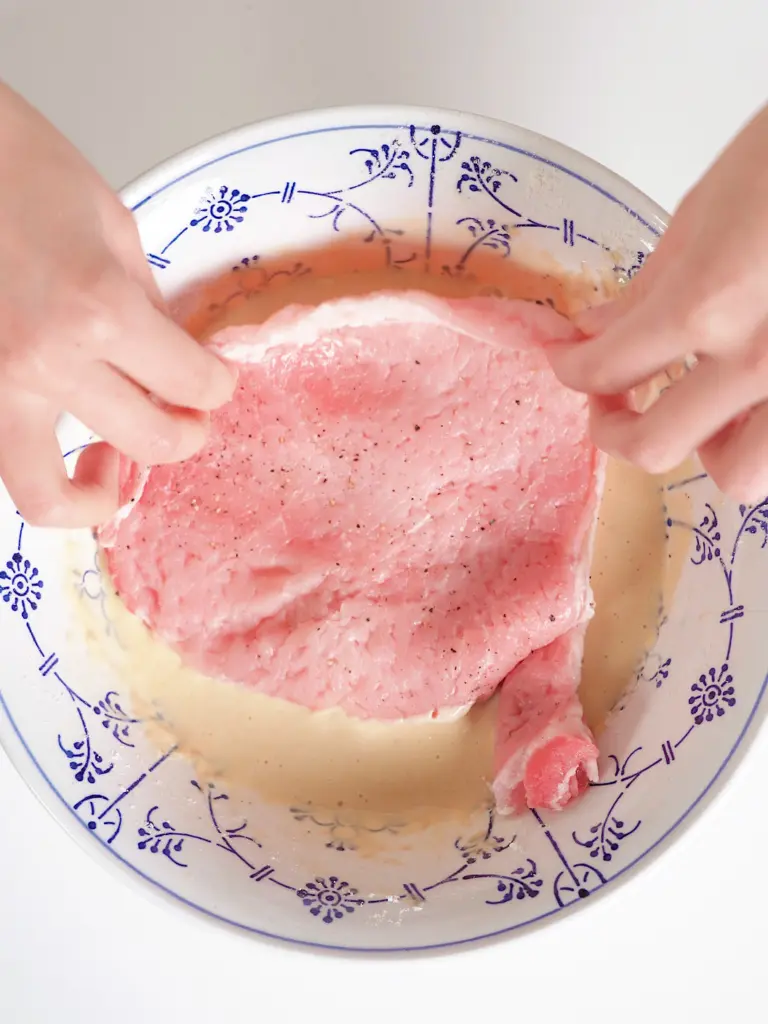
Make the Tonkatsu Sauce
- Melt 20g of butter and mix with 2 tbsp of flour to make a brown roux.
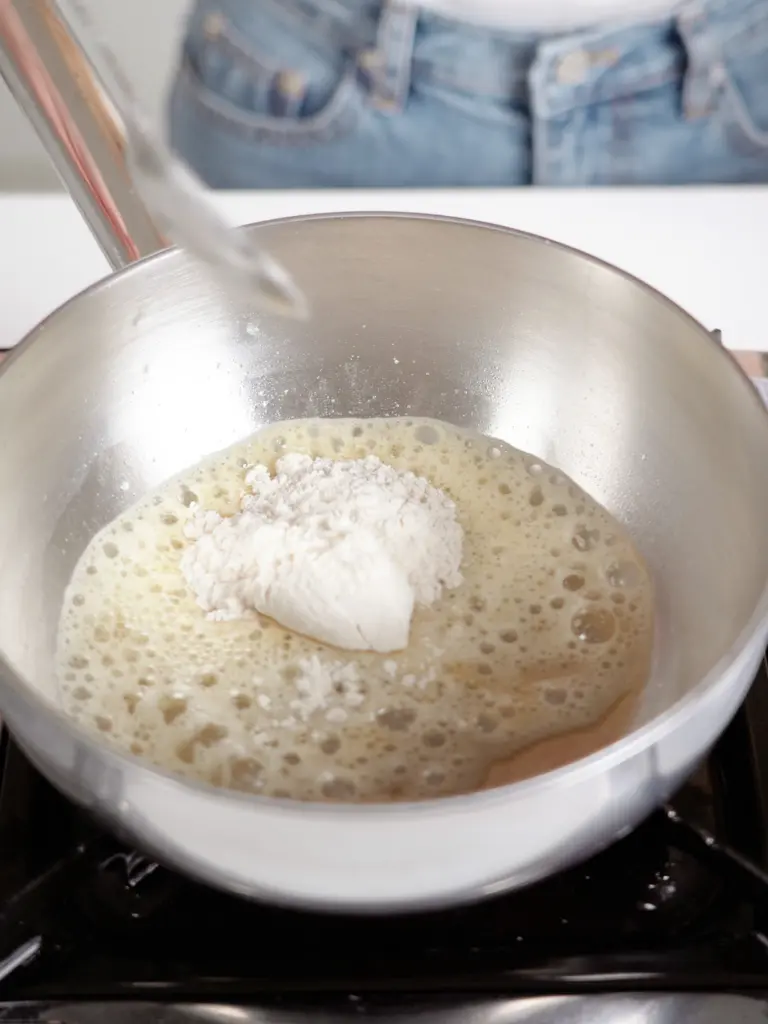
- Stir in 5 tbsp of ketchup, then add 180ml of water.
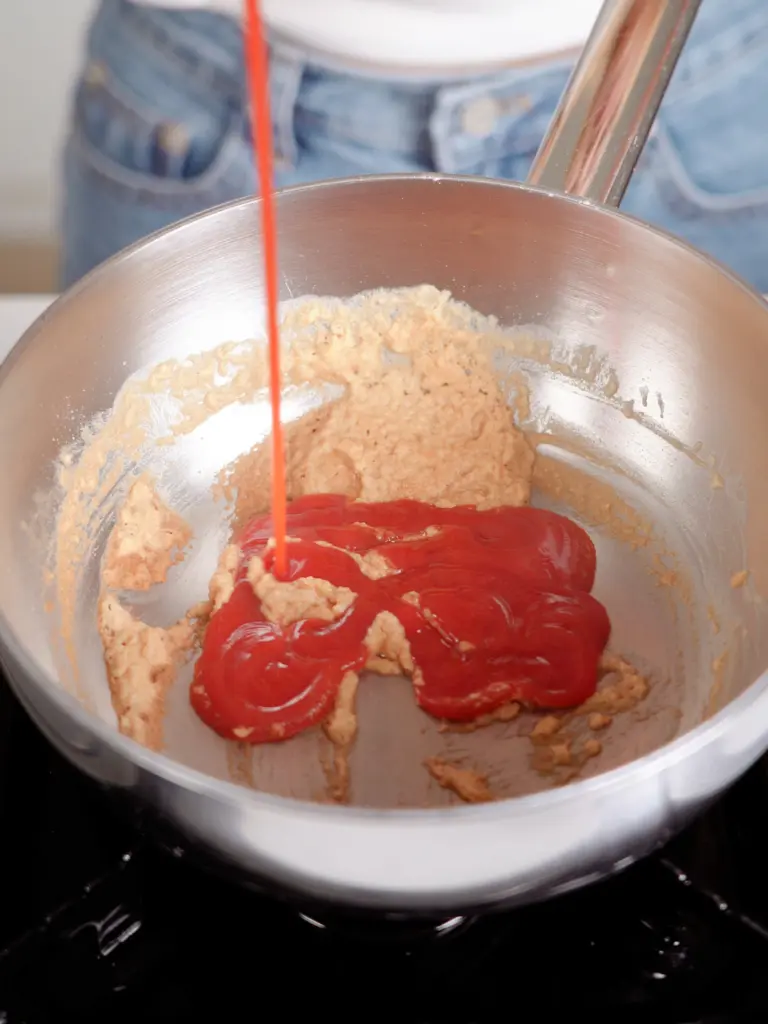
- Stir in 3 tbsp Worcestershire sauce,1 tbsp soy sauce,pinch of MSG (the magic powder),and 2 tbsp sugar.
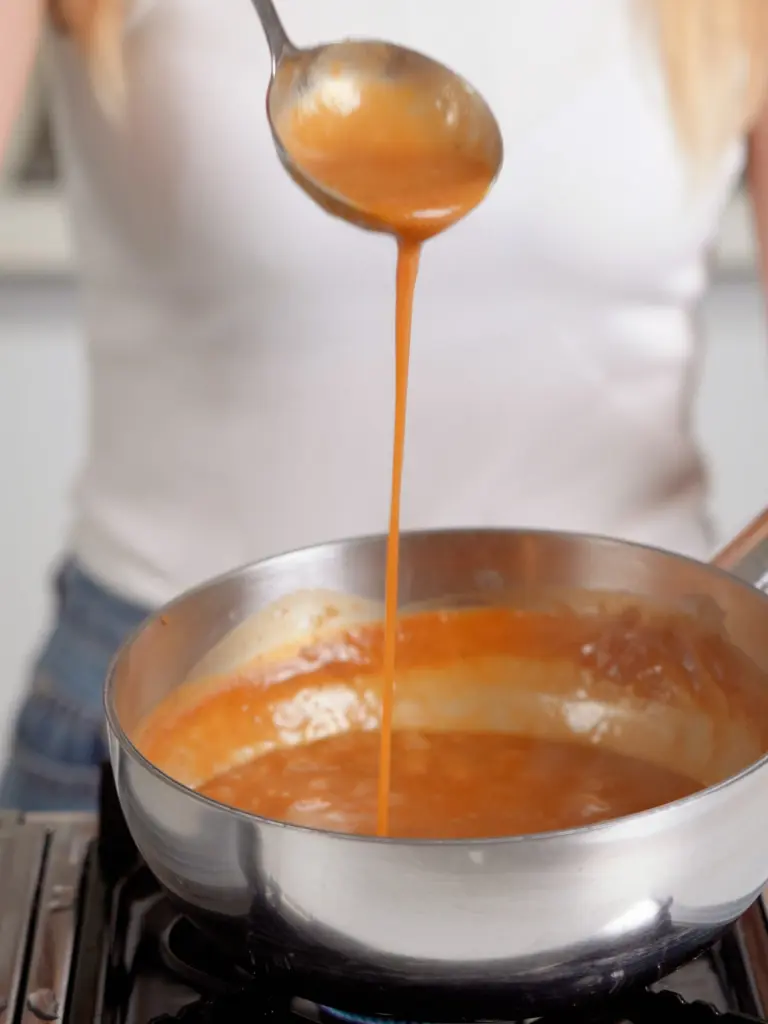
- 60mil of milk is optional, but it adds a creamy, restaurant-style richness.
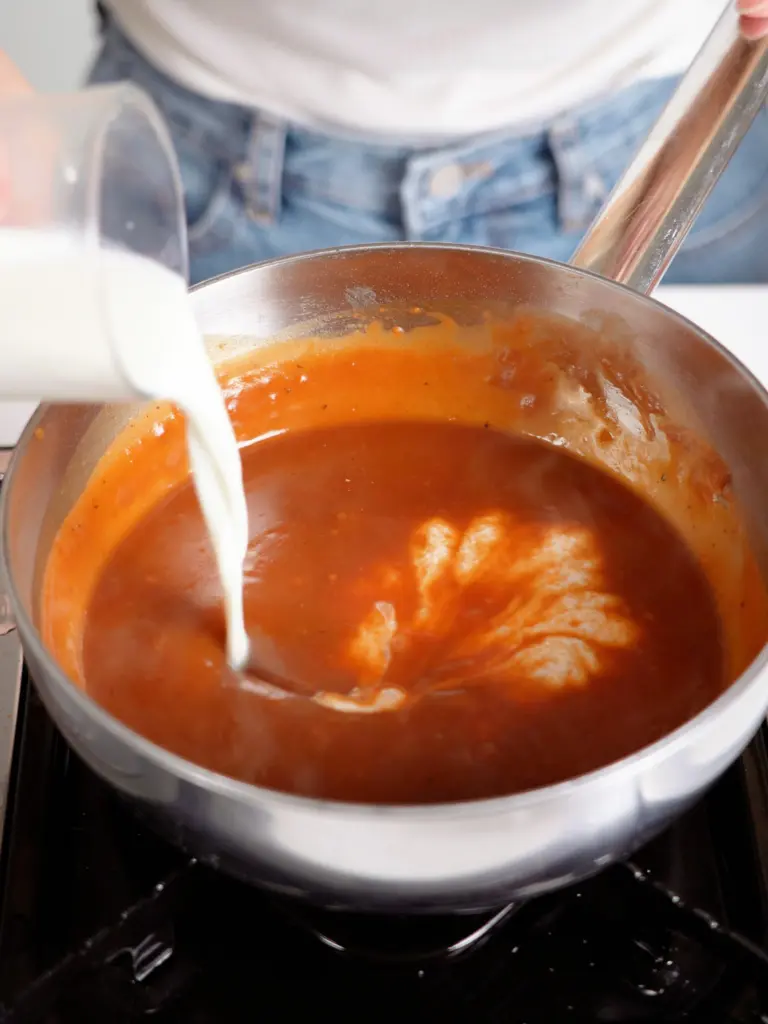
Panko & Fry
- Coat marinated tonkatsu with panko, pressing firmly for a crispy texture.
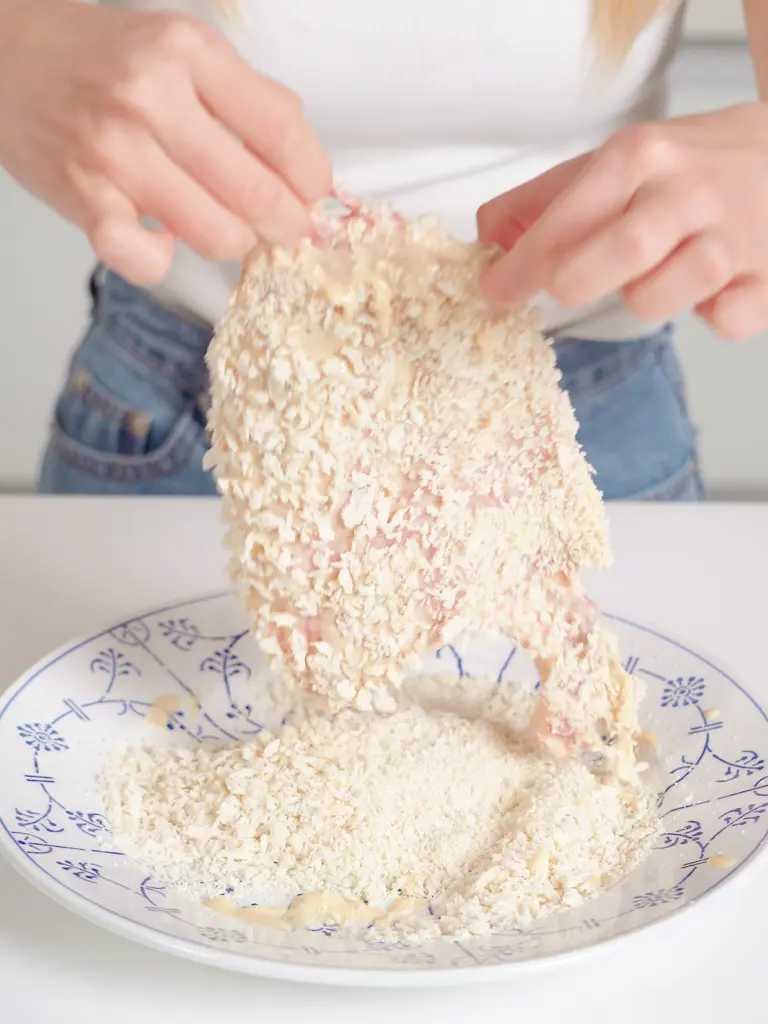
- Heat oil to 340°F (170°C) and fry until golden brown and crispy.
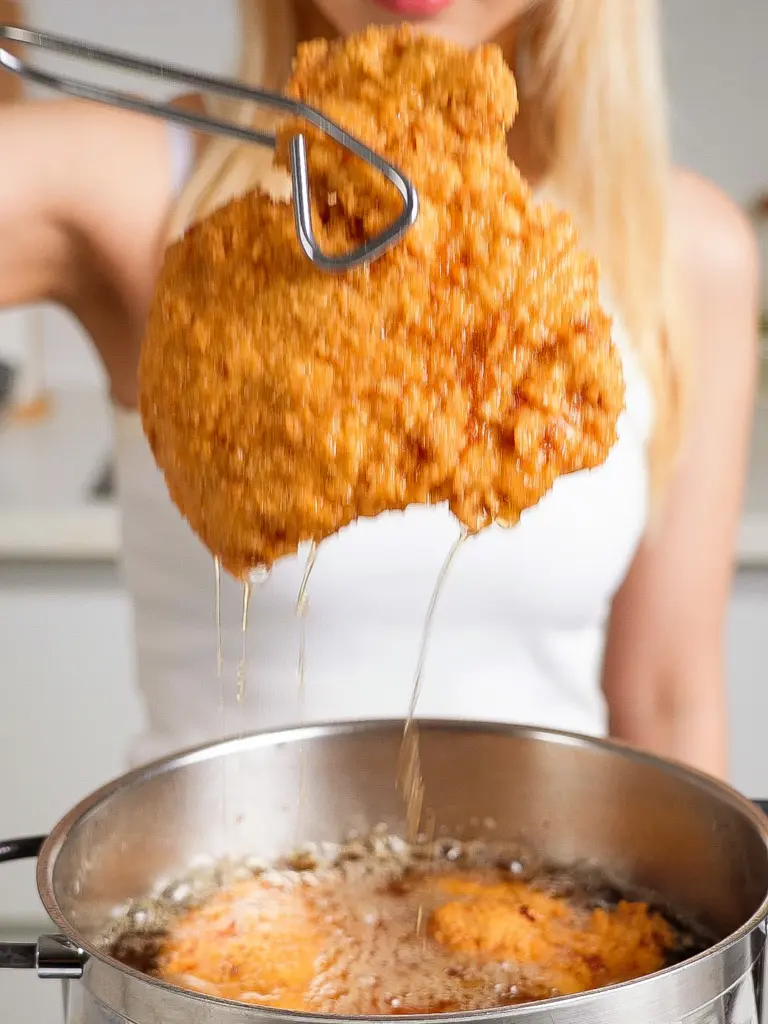
Prepare the Sides
- Shred the cabbage.
- Mix 2 tbsp ketchup and 3 tbsp mayo to make a keyonnaise dressing for the salad.
Plating
- Serve the tonkatsu with rice, cabbage and pickled radish on a round big plate.
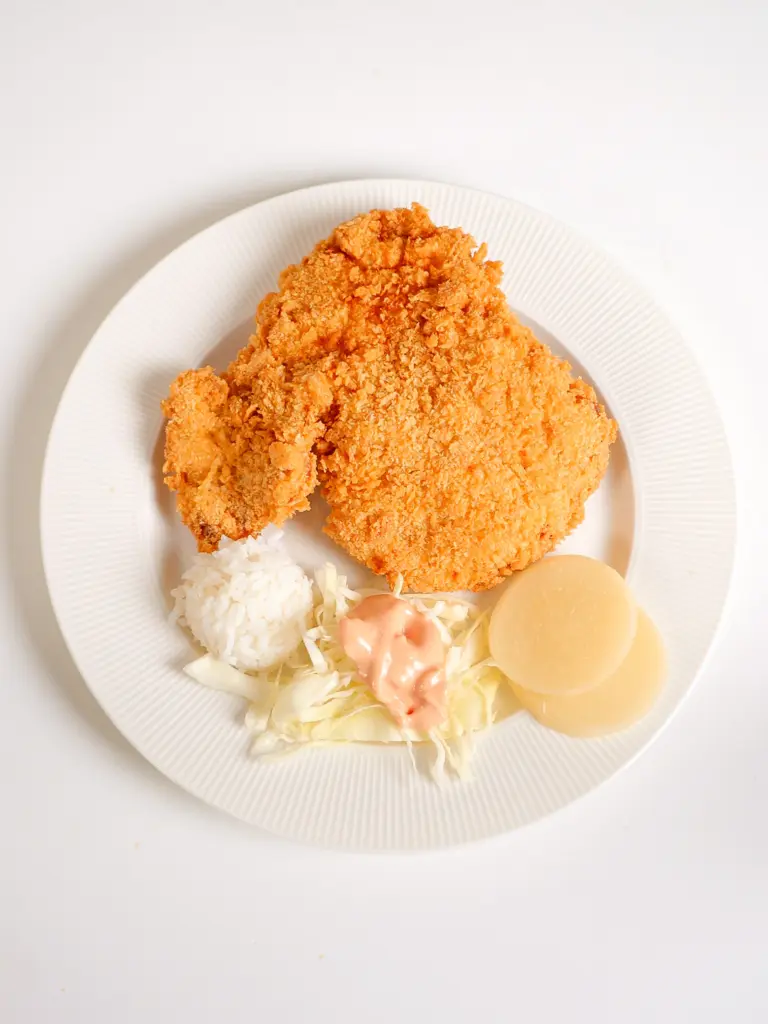
- Drizzle the cabbage with keyonnaisse.
- Pour the tonkatsu sauce over the cutlets.

Giant Korean Tonkatsu 왕돈까스
- Jal meokgetseumnida!
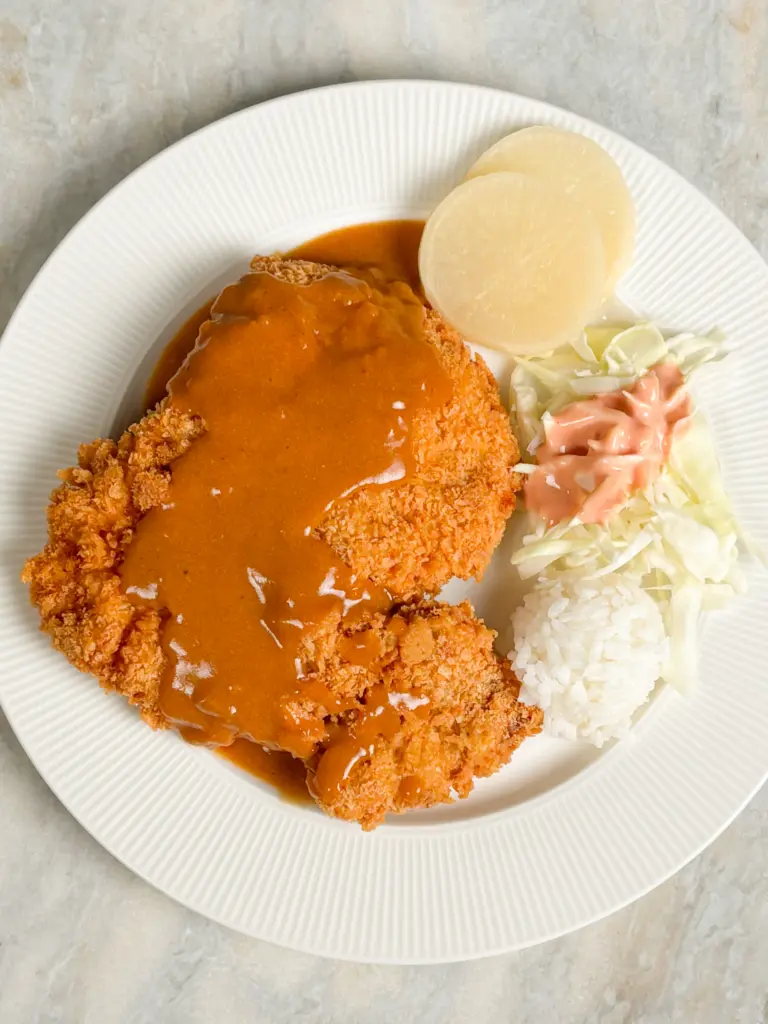
- 잘 먹겠습니다!
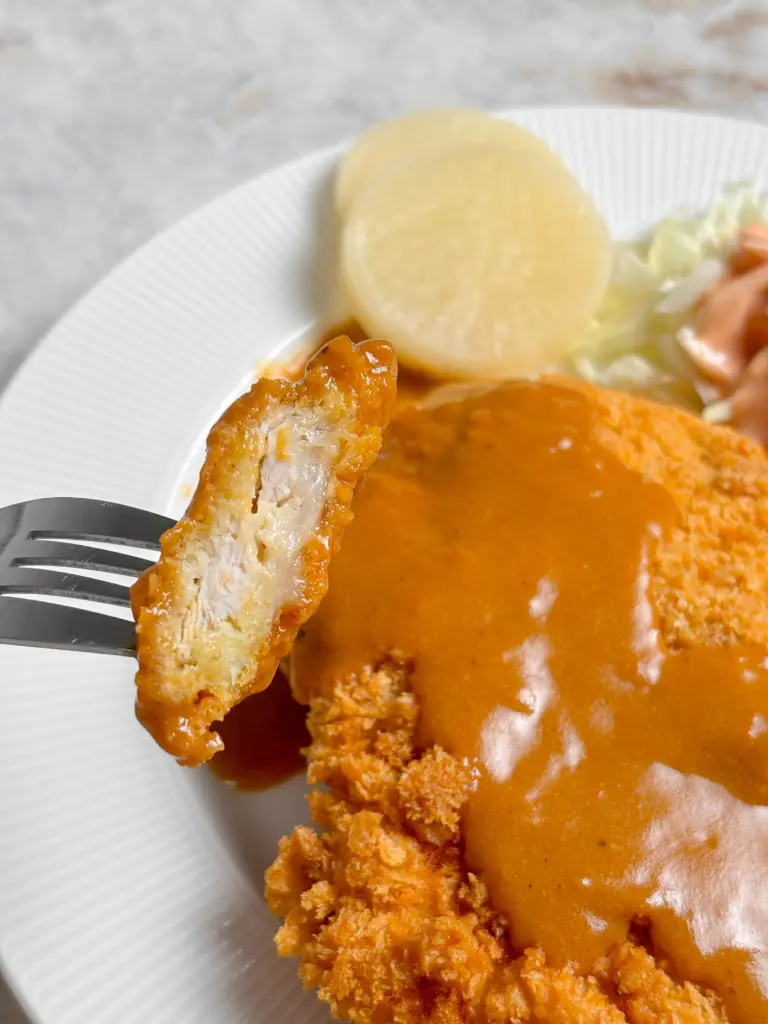
Did you make this recipe?
Please let me know how it turned out for you! Leave a comment below and tag @blondekimchi_ on Instagram and hashtag it #blondekimchi.

